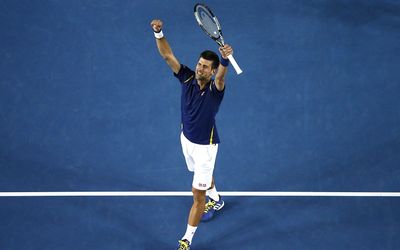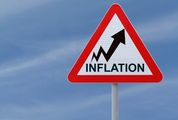OKAY, so you’re not cut from the same athletic cloth as the world’s top tennis players, Novak Djokovic and Serena Williams. Or Germany’s Angelique Kerber, who snatched the Australian Open Tennis Championship from Williams’s powerful grasp at the finals in Melbourne last weekend.
Still, tennis could be your path to fitness and fun, if not their fabulous fortune and fame.
If you’re in your 20s and haven’t held a racquet since you were a toddler, you’ve missed the professional tennis-tour boat. But experts say you can enjoy tennis recreationally at just about any age.
Tennis has a reputation as the "sport for a lifetime", with a myriad benefits, even if you aren’t very good at it. How much fun you’ll get from it depends on your competitive streak.
If you hate losing, you risk losing all gains from learning to knock that fluorescent yellow ball over the net, even with a gifted instructor and the biggest, best racquet you can buy.
In the old days, tennis balls were black or white, depending on the court’s background colour. In 1972, the International Tennis Federation introduced yellow balls after research showed they were easier for television viewers to see. Wimbledon adopted yellow balls only in 1986.
I played tennis at primary school. I either wasn’t very good or my teachers weren’t very good at spotting my talent. I prefer to think the latter.
I played tennis socially after university until motherhood and emigration intervened. I lived in London for a while, then a tiny village in the frozen Northwest Territories of Canada for a few years. It looked and felt like living on another planet — close to the Arctic Circle, under snow for six months of the year, a wind-chill factor that sent temperatures plummeting to -50°C.
It wasn’t a conducive environment for playing tennis in skimpy gear. I ran long-distance to keep fit, and learned cross-country skiing — a magical, meditative path to fitness in body and mind, but that’s for another time.
Back to tennis and its benefits: it builds aerobic and anaerobic fitness. It improves cardiovascular fitness and energy levels, and helps muscles use oxygen more efficiently, thanks to typically short, intense bursts of activity followed by brief rest periods.
The US Tennis Association is the sport’s national governing body and self-proclaimed "recognised leader in promoting and developing the sport’s growth on every level in the US, from local communities to the crown jewel of the professional game, the US Open". On its website, it states as "fact" that tennis can:
• Halve your risk of death from any cause if you play for at least three hours a week;
• Boost mood and self-esteem, reduce depression, anger and anxiety; and
• Generate new neural connections in the brain, contributing to cerebral development because of the rapid alertness and gross and fine motor co-ordination required.
The association also claims that tennis "outperforms golf, inline skating and most other sports in developing positive personality characteristics", citing Jim Gavin, author of The Exercise Habit.
Tennis hasn’t done much positive for Australian Nick Kyrgios’s personality. Ranked 41 in the world, Kyrgios, 20, rivals another famous "tennis brat": US former champion John McEnroe, in his prime.
Kyrgios’s "talent" for racquet and umpire abuse is as well-developed as his ball skills. His temper tantrums may prevent him reaching McEnroe’s golden heights as a world number one, or rivalling the American’s reputation as "among the greatest of all time in the sport, especially for his touch on the volley".
He did not disappoint at the Australian Open, annoying even the usually supportive home crowd. He was booed for an on-court "musical meltdown" during a third-set match against Czech Tomas Berdych. Kyrgios became agitated, argumentative and verbally abusive towards the umpire after hearing music wafting from the crowd.
Along with his composure and concentration, Kyrgios went on to lose the match.
The US Tennis Association says the sport helps to develop what it quaintly refers to as "performance rituals" — the "good luck" routines many players never skip between points or before serving.
Former world number one Spaniard Rafael Nadal’s rituals look more like obsessive-compulsive quirks. His coach and uncle, Toni Nadal, has admitted Nadal’s obsessive-compulsive tendencies.
The rituals haven’t served Nadal well: he made an ignominious first-round exit at the Australian Open, continuing an extended losing streak that will once again have pundits writing him off.
Russian-American Maria Sharapova’s mindful, meditative walking to the back of the court between points proved to be no match in her rivalry with Williams. Williams once again trounced Sharapova 6-4 6-1 at Melbourne.
Tennis novices should be wary of attachment to rituals. They are no amulet against "bagels", as games or sets lost 6-0 are known in tennis jargon.
Like Djokovic, former world number one, Swiss player Roger Federer is more used to giving than receiving "bagels". Federer holds the record (the light-hearted Golden Bagel Award for male players) for dishing out the most bagels in a single season: 18 going into the Tennis Masters Cup and a total of 19 in 2006.
To my mind, Federer rivals Djokovic as the best player of all time because of the intelligent and magical mix of talent and athletic prowess he displays.
You don’t have to aim that high, but to get the most out of any fitness routine you need to have fun while doing it.

You do not have to be world number one Novak Djokovic, seen here celebrating his recent Australian Open win, to benefit from playing tennis. Picture: REUTERS/JASON REED
OKAY, so you’re not cut from the same athletic cloth as the world’s top tennis players, Novak Djokovic and Serena Williams. Or Germany’s Angelique Kerber, who snatched the Australian Open Tennis Championship from Williams’s powerful grasp at the finals in Melbourne last weekend.
Still, tennis could be your path to fitness and fun, if not their fabulous fortune and fame.
If you’re in your 20s and haven’t held a racquet since you were a toddler, you’ve missed the professional tennis-tour boat. But experts say you can enjoy tennis recreationally at just about any age.
Tennis has a reputation as the "sport for a lifetime", with a myriad benefits, even if you aren’t very good at it. How much fun you’ll get from it depends on your competitive streak.
If you hate losing, you risk losing all gains from learning to knock that fluorescent yellow ball over the net, even with a gifted instructor and the biggest, best racquet you can buy.
In the old days, tennis balls were black or white, depending on the court’s background colour. In 1972, the International Tennis Federation introduced yellow balls after research showed they were easier for television viewers to see. Wimbledon adopted yellow balls only in 1986.
I played tennis at primary school. I either wasn’t very good or my teachers weren’t very good at spotting my talent. I prefer to think the latter.
I played tennis socially after university until motherhood and emigration intervened. I lived in London for a while, then a tiny village in the frozen Northwest Territories of Canada for a few years. It looked and felt like living on another planet — close to the Arctic Circle, under snow for six months of the year, a wind-chill factor that sent temperatures plummeting to -50°C.
It wasn’t a conducive environment for playing tennis in skimpy gear. I ran long-distance to keep fit, and learned cross-country skiing — a magical, meditative path to fitness in body and mind, but that’s for another time.
Back to tennis and its benefits: it builds aerobic and anaerobic fitness. It improves cardiovascular fitness and energy levels, and helps muscles use oxygen more efficiently, thanks to typically short, intense bursts of activity followed by brief rest periods.
The US Tennis Association is the sport’s national governing body and self-proclaimed "recognised leader in promoting and developing the sport’s growth on every level in the US, from local communities to the crown jewel of the professional game, the US Open". On its website, it states as "fact" that tennis can:
• Halve your risk of death from any cause if you play for at least three hours a week;
• Boost mood and self-esteem, reduce depression, anger and anxiety; and
• Generate new neural connections in the brain, contributing to cerebral development because of the rapid alertness and gross and fine motor co-ordination required.
The association also claims that tennis "outperforms golf, inline skating and most other sports in developing positive personality characteristics", citing Jim Gavin, author of The Exercise Habit.
Tennis hasn’t done much positive for Australian Nick Kyrgios’s personality. Ranked 41 in the world, Kyrgios, 20, rivals another famous "tennis brat": US former champion John McEnroe, in his prime.
Kyrgios’s "talent" for racquet and umpire abuse is as well-developed as his ball skills. His temper tantrums may prevent him reaching McEnroe’s golden heights as a world number one, or rivalling the American’s reputation as "among the greatest of all time in the sport, especially for his touch on the volley".
He did not disappoint at the Australian Open, annoying even the usually supportive home crowd. He was booed for an on-court "musical meltdown" during a third-set match against Czech Tomas Berdych. Kyrgios became agitated, argumentative and verbally abusive towards the umpire after hearing music wafting from the crowd.
Along with his composure and concentration, Kyrgios went on to lose the match.
The US Tennis Association says the sport helps to develop what it quaintly refers to as "performance rituals" — the "good luck" routines many players never skip between points or before serving.
Former world number one Spaniard Rafael Nadal’s rituals look more like obsessive-compulsive quirks. His coach and uncle, Toni Nadal, has admitted Nadal’s obsessive-compulsive tendencies.
The rituals haven’t served Nadal well: he made an ignominious first-round exit at the Australian Open, continuing an extended losing streak that will once again have pundits writing him off.
Russian-American Maria Sharapova’s mindful, meditative walking to the back of the court between points proved to be no match in her rivalry with Williams. Williams once again trounced Sharapova 6-4 6-1 at Melbourne.
Tennis novices should be wary of attachment to rituals. They are no amulet against "bagels", as games or sets lost 6-0 are known in tennis jargon.
Like Djokovic, former world number one, Swiss player Roger Federer is more used to giving than receiving "bagels". Federer holds the record (the light-hearted Golden Bagel Award for male players) for dishing out the most bagels in a single season: 18 going into the Tennis Masters Cup and a total of 19 in 2006.
To my mind, Federer rivals Djokovic as the best player of all time because of the intelligent and magical mix of talent and athletic prowess he displays.
You don’t have to aim that high, but to get the most out of any fitness routine you need to have fun while doing it.




















Change: -0.47%
Change: -0.57%
Change: -1.76%
Change: -0.34%
Change: 0.02%
Data supplied by Profile Data
Change: -1.49%
Change: 0.08%
Change: -0.47%
Change: 0.00%
Change: -0.04%
Data supplied by Profile Data
Change: -0.34%
Change: 0.03%
Change: -0.10%
Change: -0.22%
Change: -0.69%
Data supplied by Profile Data
Change: -0.28%
Change: -1.15%
Change: -0.07%
Change: -1.21%
Change: -0.22%
Data supplied by Profile Data